Understanding Fushigi: Mystery and Curiosity in Japan
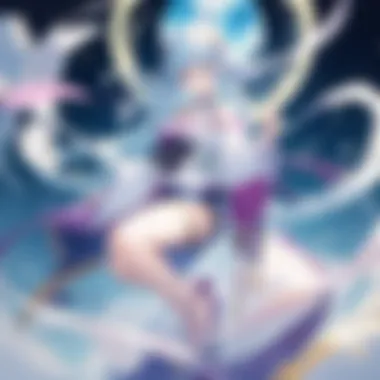

Intro
In Japanese culture, the term fushigi conveys an intriguing blend of mystery and fascination. This concept extends beyond mere curiosity; it encapsulates experiences that are often deeply rooted in the aesthetic and philosophical underpinnings of Japan. Fushigi relates to moments that evoke a sense of wonder, prompting individuals to explore the enigmatic world around them. This phenomenon can be seen in various aspects of Japanese life, particularly in literature, art, and, notably, anime and manga.
As we delve into this exploration of fushigi, we will examine its historical origins, its present-day significance, and how it manifests uniquely within the realms of anime and manga. Through careful analysis, we aim to decipher how this concept shapes cultural narratives and influences perceptions of beauty and intrigue.
Character Profiles
The representation of fushigi often manifests through character archetypes found in anime and manga. Understanding these characters helps to appreciate how creators utilize fushigi to engage their audiences.
Overview of Main Characters
Characters embodying fushigi can range from the whimsical to the profoundly complex. These figures often possess unique traits or abilities that set them apart, inviting viewers to ponder their mysteries. For example, Spirited Away presents Chihiro, a young girl navigating a fantastical realm. Her journey unveils layers of fushigi as she interacts with spirits and learns about resilience and transformation.
Supporting Characters
Supporting characters often enhance the central theme of fushigi by introducing additional layers of complexity. In similar narratives, one may encounter Yuki* from Fruits Basket, a character burdened by a curse that affects her relationships. Her existence highlights the intrigue surrounding personal struggles and the hidden beauty of one's journey.
"Investigating characters who embody fushigi leads to a deeper appreciation of narratives that explore human experiences through the lens of the mysterious."
Theme Exploration
Fushigi is intertwined with numerous themes within Japanese culture, especially in storytelling.
Central Themes
Some prevalent themes associated with fushigi include:
- The exploration of identity: Many characters embark on quests to discover themselves, often revealing unexpected truths.
- The power of nature: Nature often holds mysteries, illustrated in works like Princess Mononoke, where the environment plays a vital role in the narrative.
Cultural References
Cultural elements contribute significantly to the understanding of fushigi. References might include historic folktales or even modern myths. Tengu, mythical creatures in Japanese folklore, represent the blend of intrigue and the unknown. They serve as metaphors for the complexity of human behavior and societal beliefs.
Popular Series and Recommendations
Certain series exemplify the concept of fushigi through their intricate plots and character development. Exploring these works offers insight into how fushigi enriches storytelling in anime and manga.
Top Anime Series of the Year
This year has seen a surge in anime that encompasses the essence of fushigi. Notable mentions include:
- Mushoku Tensei: This series blends fantasy with deep character exploration, revealing aspects of life through an extraordinary lens.
- Jujutsu Kaisen: A dark perspective on fushigi that intertwines mysticism with a contemporary setting.
Hidden Gems in Manga
While popular series capture significant attention, several lesser-known titles also reflect the theme of fushigi:
- The Promised Neverland: A story that combines mystery with adventure, inviting readers into a world filled with secrets.
- Kaguya-sama: Love Is War: This manga uses psychology and personal dynamics to create moments laden with fushigi.
Understanding fushigi within these contexts deepens one’s appreciation of the narratives and cultural significance behind them. Thus, exploring fushigi not only enhances our knowledge of Japanese culture, but also fosters a greater understanding of humanity's quest for meaning.
Prelude to Fushigi
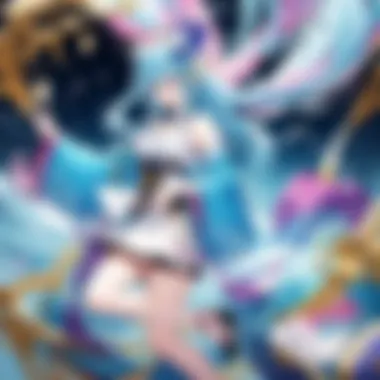
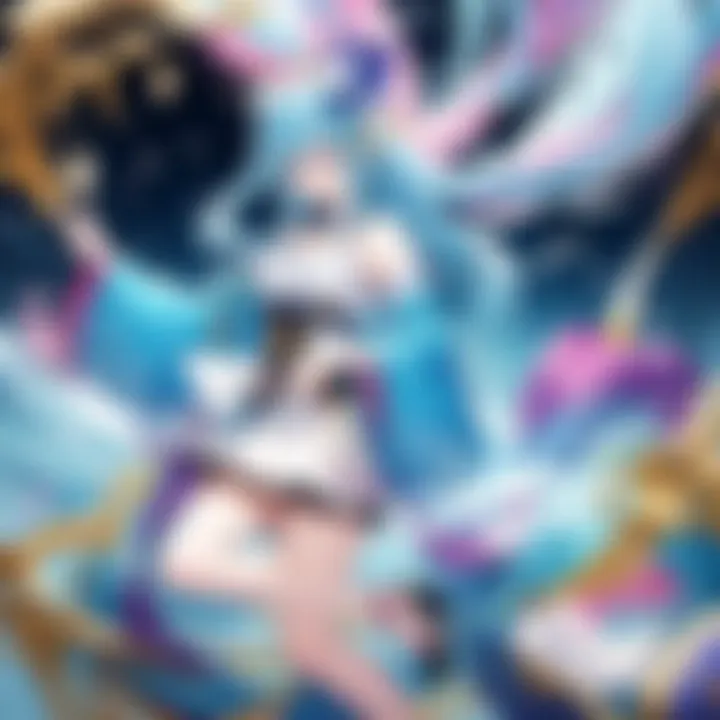
Fushigi represents a foundational concept in Japanese culture, embodied by elements of mystery, curiosity, and wonder. Understanding fushigi is essential for those seeking to appreciate the nuances within Japanese aesthetics and thought. This section aims to explore the significance of fushigi as it transcends mere definitions. It applies to literature, art, and everyday experiences in Japan, offering deeper insights into how people perceive the world around them.
This notion extends beyond surface interpretations, inviting a dialogue about how one experiences beauty and the unknown. Examining fushigi aids in recognizing its impact on modern media, particularly in anime and manga, where it serves as a powerful narrative tool and emotional anchor.
Defining Fushigi
Fushigi can be loosely translated to mean "wonder" or "mystery." However, this does not capture its full essence. Fushigi holds connotations that encompass feelings of curiosity and the inexplicable. In Japanese consciousness, it adorns experiences that are difficult to articulate—moments that evoke awe or provoke thought and reflection.
The term shapes how individuals interact with the unknown. Fushigi invites inquiry and exploration, encouraging beholders to investigate rather than simply consume. It can be applied in various contexts such as observing nature, experiencing art, or engaging in philosophical discourse.
The Etymology of Fushigi
Delving into the etymology of fushigi reveals its rich roots. The word is formed from the kanji characters 不 (fu) meaning "not" or "non", and 思議 (shigi) meaning "thought" or "wonder." Together, they convey a sense of something beyond comprehension or expectation.
This linguistic construction mirrors how Japanese culture has revered the intangible. By examining the term's evolution, one can better appreciate how it has come to resonate with an entire society. Fushigi is not merely a feeling; it reflects an essential aspect of how people understand beauty and complexity in their world.
In summary, the introduction to fushigi sets the stage for a deeper discussion on its rich historical context and its representations in various forms of art and thought. Understanding fushigi opens avenues to explore the cultural fabric of Japan, making it relevant for anyone interested in the intersections of philosophy, art, or modern graphic storytelling.
Historical Context
Understanding the historical context of fushigi provides a vital framework for appreciating its significance in Japanese culture. This concept does not exist in a vacuum; rather, it is deeply rooted in the historical evolution of Japan and its people. By examining traditional beliefs and philosophies, we gain insights into how fushigi has shaped and been shaped by the collective consciousness over centuries. Moreover, the exploration of its historical significance can reveal deeper layers of meaning inherent to the term.
Fushigi in Traditional Japanese Thought
Fushigi has long been intertwined with the thought processes of ancient Japanese society. Historical texts and philosophical treatises indicate that mystery and curiosity were integral to understanding the natural world. Shinto, Japan's indigenous spirituality, emphasized the awe and reverence of nature. In this context, elements such as mountains, rivers, and forests were perceived not just as physical entities but as living beings imbued with spirits. This perspective fosters a sense of wonder, highlighting an inherent connection between humanity and the unseen forces of the universe.
Moreover, traditional Japanese aesthetics, often rooted in the concept of wabi-sabi, appreciates beauty in imperfection and transience. Fushigi complements this philosophy by encouraging individuals to embrace the unknown and the ephemeral aspects of life. The contemplation of the mysterious often leads to a deeper appreciation of beauty, a quality emphasized in many forms of art and literature throughout Japanese history.
Influence of Buddhism on Fushigi
Buddhism emerged in Japan and began influencing various aspects of culture, including the notion of fushigi. The Buddhist perspective on existence investigates the ephemeral nature of life, reinforcing the importance of understanding that reality comprises layers of complexity and mystery. Concepts such as impermanence and interconnectedness echo throughout Buddhist teachings, shaping interpretations of fushigi in both thought and practice.
Furthermore, Zen Buddhism further amplifies the appreciation of mystery. Zen teaches practitioners to embrace the present moment, cultivating a sense of wonder and curiosity about life as it unfolds. This philosophy resonates with the essence of fushigi, encouraging a deep exploration of existence while accepting uncertainty and the unknown. Thus, the integration of Buddhist ideologies has cultivated an environment in which the fushigi can thrive in Japanese consciousness.
"The essence of fushigi enfolds a profound inquiry into existence, a relationship to the unknown that invites exploration rather than closure."
Fushigi in Literature
Understanding the role of fushigi in literature is essential to grasp the depth of this concept within Japanese culture. Literature serves as a mirror reflecting society's values, emotions, and mysteries. The theme of fushigi embodies a craving for understanding the unknown, inviting readers to explore intriguing narratives that evoke curiosity and wonder. Both classic and contemporary works utilize fushigi to engage the audience on multiple levels, prompting them to ponder complex ideas and feelings.
Fushigi enhances the narrative by introducing elements that provoke thought and highlight relationships between characters, settings, and emotions. The use of fushigi in literature deepens plot development while allowing for rich character exploration. This section delves into two significant facets: classic literature, where themes of fushigi have stood the test of time, and contemporary expressions, which adapt these themes to modern sensibilities.
Fushigi in Classic Literature
Classic Japanese literature offers profound examples where fushigi plays a crucial role. Works from the Heian period, like "The Tale of Genji," encapsulate feelings of mystery and beauty intertwined with human emotions. The narrative subtly hints at the fragility of life and the complexity of relationships. Such elements reveal the foundational beliefs of fushigi, illustrating how it permeates the human experience.
The folklore tradition in Japan, including stories of spirits and supernatural beings, also reflects fushigi. Tales like "Momo Taro" or "Urashima Taro" add layers of moral and ethical dimensions to the lived experience. Readers encounter the inexplicable through their journeys and the proverbial lessons embedded within these tales. It’s essential to note how these classical works laid the groundwork for understanding fushigi as a cultural staple.
Contemporary Expressions of Fushigi
In modern literature, fushigi continues to thrive and evolves to cater to contemporary audiences. Authors explore new dimensions of mystery and curiosity in various formats, such as novels, graphic novels, and even web novels. Writers like Haruki Murakami exemplify this trend by weaving elements of magic realism and psychological depth that resonate deeply with readers.
Additionally, contemporary poetry often reflects feelings of ambiguity and wonder, reinforcing fushigi’s importance in expressing emotional complexity. This adaptability showcases how fushigi remains relevant, engaging the audience in a significant way. Themes such as existentialism and the unknown capture the zeitgeist of modern society while retaining the essence of fushigi’s roots.
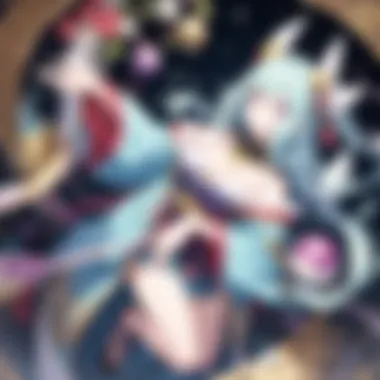

Ultimately, exploring both classic and contemporary uses of fushigi in literature provides valuable insights into its cultural and philosophical significance. Through each narrative, readers develop a richer understanding of themselves and their place in a wider universe characterized by enigmas.
Fushigi in Anime and Manga
Anime and manga serve as vital mediums for interpreting and expressing the concept of fushigi. In these forms of art, fushigi manifests through captivating narratives, enigmatic characters, and imaginative worlds. These elements not only engage the audience but also push the boundaries of creativity and thought. As both a historical reflection and contemporary exploration of cultural themes, fushigi within anime and manga provides deeper insight into Japanese culture and its fascination with mystery and wonder.
Depictions of Mystery and Curiosity
Fushigi is often realized through the depiction of mystery within anime and manga. Creators utilize visual storytelling to conjure a sense of awe and curiosity. Characters may encounter supernatural occurrences, inexplicable events, or unknown entities, inviting viewers to ponder their significance. This mechanism promotes an intrinsic desire for exploration and understanding, key to the fushigi concept.
- Enigmatic Characters: Often, protagonists grapple with their identities while facing the unknown, creating a strong bond between the audience and the narrative.
- Immersive Worlds: Fantasy realms are often filled with enchanting rules that challenge conventional logic, drawing viewers into a space where fushigi thrives.
One prominent example can be seen in Spirited Away, where Chihiro navigates a world filled with strange spirits and entities, each cloaked in a layer of mystery. The surreal elements provoke curiosity, showcasing how fushigi permeates the storyline and engages the viewer on a deeper level.
"Fushigi reflects not just the unknown but our reaction to it, forming a bridge between reality and imagination."
Fushigi as a Narrative Device
Fushigi functions as a powerful narrative device in anime and manga, shaping plots and character arcs. By incorporating elements of the inexplicable, creators can evoke emotions ranging from wonder to anxiety. Core functions of fushigi in storytelling may include:
- Conflict Creation: The presence of an unsolvable problem or phenomenon often drives the plot forward, creating tension and intrigue.
- Character Development: As characters confront their fears or embark on quests to uncover truths, their journey becomes a metaphor for inner growth and discovery.
In series such as Death Note, the mysterious death note itself serves as a catalyst for a profound exploration of morality and justice, compelling characters to make harrowing choices.
Cultural Significance of Fushigi
The concept of fushigi holds deep cultural significance within Japan. It transcends mere curiosity and intrigue, weaving itself into the fabric of Japanese identity. Understanding fushigi is essential for appreciating the intricate layers of beauty, meaning, and expression in many aspects of Japanese culture.
Fushigi interacts with various cultural elements. It informs traditional arts, spirituality, and aesthetics. This interplay bridges the seen and unseen, the known and unknown. The allure of fushigi keeps individuals seeking deeper understanding. Curiosity is a driving force. It encourages exploration of life’s mysteries, enhancing one’s engagement with art and nature.
Fushigi also embodies a sense of wonder. This wonder often stimulates creativity. Artists, writers, and creators draw inspiration from fushigi. They may depict forms of beauty that are not immediately evident. These artistic expressions invite contemplation and reflection. When one encounters something mysterious, it fosters an emotional response, compelling one to engage further.
Moreover, fushigi reflects societal values. In contemporary discourse, it prompts discussions around beauty, ethics, and the unknown. It challenges traditional ways of thinking, encouraging people to embrace uncertainty. By delving into fushigi, individuals confront larger questions about existence, society, and their place within it.
Fushigi and Japanese Aesthetics
In Japanese aesthetics, fushigi plays a pivotal role. It infuses art and design with elements of mystery and beauty. Traditional arts, such as tea ceremony, Ikebana, and calligraphy, encapsulate fushigi in their practices. Each element conveys a sense of depth and resonance, inviting introspection.
For example, the principle of "wabi-sabi," appreciating the beauty in imperfection and transience, aligns closely with fushigi. This appreciation fosters an understanding that beauty often lies in the elusive and the understated. In visual arts, we see a similar connection where negative space and simplicity evoke a sense of wonder about what is not visible.
Fushigi also manifests in architecture, where spaces are designed to create an experience of discovery. The layout encourages exploration, often leading to unexpected encounters with beauty. This resonates deeply with enjoying nature, where each moment can bring a new revelation and a sense of connection to the universe.
Fushigi in Contemporary Pop Culture
Contemporary Japanese pop culture, particularly anime and manga, incorporates fushigi effectively. Genres such as fantasy, horror, and slice-of-life often explore themes of mystery and the unknown. Many creators use fushigi to engage audiences, inviting them to ponder deeper meanings.
Series like Mushishi exemplify this blend of storytelling and philosophical inquiry. The show emphasizes coexistence with nature and the unseen forces around us. This narrative not only entertains but also provokes thought about the relationship between humans and the world.
In video games, the fushigi concept often manifests through puzzling environments and intricate worlds. Titles like The Legend of Zelda series showcase environments filled with secrets. Players are encouraged to explore and uncover hidden layers of the narrative, enriching their gaming experience.
Philosophical Implications
The philosophical implications of fushigi extend beyond mere curiosity. It captures the essence of human experience within a broader cultural framework. This concept encourages individuals to engage with the unknown. Fushigi emphasizes the value of wonder and mystery in life. This section will explore why understanding fushigi provides a deeper grasp of Japanese culture. It highlights the aspects of existence that defy easy comprehension.
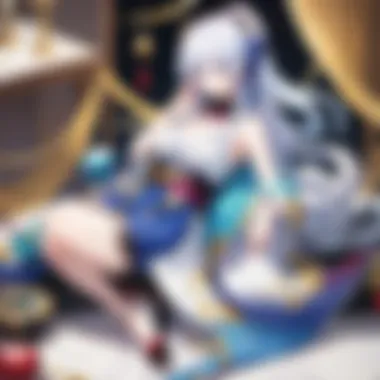
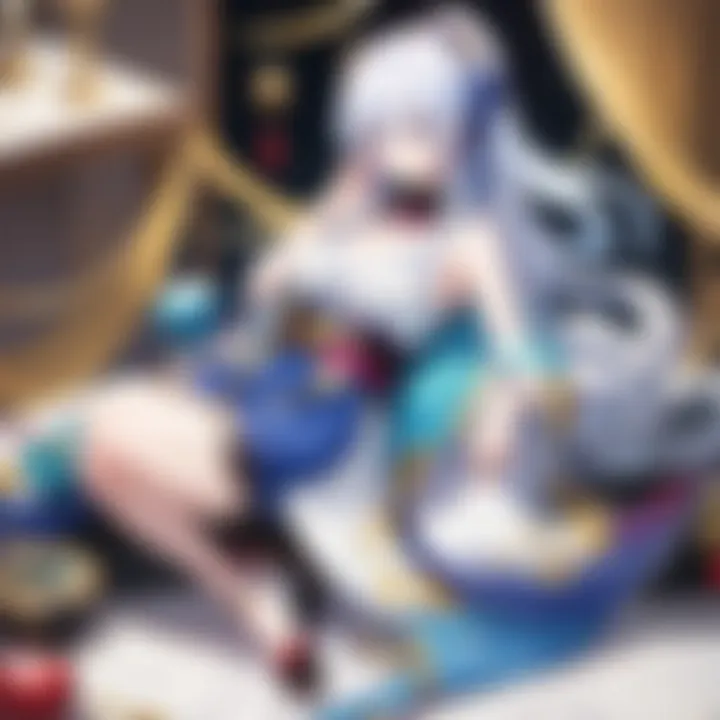
The Nature of Wonder in Fushigi
Wonder is a fundamental aspect of human experience. It prompts inquiry and reflection. In the context of fushigi, wonder relates to how people perceive extraordinary phenomena. This perception fosters a sense of awe towards nature and the universe.
Joys from simple things often highlight the principle of fushigi. For instance, the transient beauty of cherry blossoms conveys a deeper significance. It serves as a reminder of impermanence. This distinction between ordinary and extraordinary helps enrich emotional experiences.
In literature and media, moments of wonder serve as catalysts for character development. For example, protagonists often undergo transformation through their encounters with the inexplicable. These reflections on wonder often resonate powerfully with audiences. They reveal much about personal and cultural values.
Fushigi and the Unknown
The interplay between fushigi and the unknown is significant. This relationship challenges individuals to confront uncertainties. It encourages an embrace of ambiguity, often feared in contemporary thought. Fushigi embodies both fascination and trepidation regarding the unknown.
Historically, the unknown has provoked philosophical inquiry. This aligns with traditions of wabi-sabi and other aesthetic principles. They find beauty in imperfection and transience. Accepting the unknown can lead to deeper insights into one's nature and condition. It signifies an acceptance that not everything can be understood or controlled.
"Embracing the unknown is often the first step toward real discovery."
In anime and manga, characters often face the unknown. This can manifest through quests that lead to self-discovery or truths hidden deep within. These narratives mirror real-life experiences where exploration goes hand-in-hand with uncertainty. Recognizing this relationship enhances appreciation for stories that embody fushigi.
In summary, fushigi's philosophical implications offer a gateway into understanding mystery and beauty. By examining the nature of wonder and the role of the unknown, the concept enriches not only literature and art but also everyday life. Understanding these aspects is essential in appreciating the broader cultural landscape of Japan.
Fushigi in Art
Fushigi plays a significant role in the realm of art, offering a unique lens through which to understand creativity and expression in Japanese culture. This section explores how the concept of fushigi influences various forms of art, encouraging both artists and viewers to engage with the unknown. The relationship between fushigi and art centers on two primary aspects: visual interpretations and contemporary manifestations. By dissecting these elements, we can grasp how art serves as a canvas for the enigmatic qualities of fushigi.
Visual Interpretations of Fushigi
Visual representations of fushigi often highlight the interplay between the seen and the unseen. Artists utilize this concept to evoke feelings of wonder and curiosity. For instance, traditional Japanese paintings may depict landscapes that seem ordinary at first glance but reveal something deeper upon closer inspection. These layers of meaning engage viewers, prompting them to contemplate the nature of existence itself. The sense of mystery can be a powerful stimulus for creative expression.
When examining visual art forms, several key characteristics emerge:
- Ambiguity: Artists often leave elements open to interpretation. This invites multiple perspectives and engages the audience's imagination.
- Symbolism: Objects within the artwork may represent broader concepts. For example, a foggy landscape can signify uncertainty, while bright colors might symbolize hope.
- Contrasts: The division between light and dark can create a sense of tension, reflecting the duality of understanding and ignorance.
These elements work together to create a visual language that encapsulates fushigi. The viewer's engagement with the piece is an integral part of the aesthetic experience.
Fushigi in Contemporary Visual Arts
In contemporary visual arts, fushigi manifests in diverse ways. Modern artists explore this concept using new mediums and technologies. For instance, digital art often combines various elements like animation and interactive components, which can enhance the sense of mystery. Audiences are no longer mere observers; they become participants, exploring different pathways within the artwork itself.
Moreover, contemporary installation art often challenges conventional boundaries. Artists like Yayoi Kusama use repetition and infinity rooms to transport viewers into a world of endless possibilities, inspiring both awe and contemplation about their place within the universe.
Notable considerations regarding fushigi in contemporary art include:
- Interactivity: Emerging technologies allow for greater viewer involvement, creating a dynamic experience.
- Cultural Exchange: Global influences are evident in how fushigi is interpreted, blending traditional techniques with modern narratives.
- Reinterpretation: Artists continue to reinterpret classic themes associated with fushigi, ensuring the concept remains relevant in the current cultural landscape.
"Art enables us to find ourselves and lose ourselves at the same time." - Thomas Merton
Culmination
The examination of fushigi reveals its significant role in shaping both historical and contemporary Japanese culture. Fushigi embodies the intertwining of mystery, curiosity, and the inexplicable, creating a rich tapestry of meaning. This concept is not just an abstract idea; it finds expression in literature, media, and art, influencing various forms of creativity. The analysis of fushigi enhances our understanding of aesthetic values and philosophical inquiries that permeate Japanese society.
The Enduring Relevance of Fushigi
Fushigi remains relevant in today’s cultural landscape. It invites contemplation about the unknown and encourages a deeper inquiry into what lies beyond the surface. In literature, works that explore fushigi often challenge conventional narratives, encouraging readers to question their perceptions and delve into the unexplained aspects of human existence. The impact of fushigi can be seen in modern anime and manga where characters often confront mysteries that bring forth existential questions.
Moreover, the allure of fushigi fosters a sense of wonder that resonates with the audience. It bridges the gap between reality and imagination, creating narratives that captivate. The continuing presence of fushigi in pop culture attests to its ability to adapt, ensuring that it remains a focal point of discussion among enthusiasts.
Future Directions in Fushigi Studies
As the concept of fushigi evolves, future studies may focus on its implications in the global context. The influence of globalization presents an opportunity to examine how fushigi intersects with other cultural frameworks. Scholars could explore how different cultures interpret similar themes of mystery and curiosity, thereby expanding the conversation.
Moreover, interdisciplinary approaches can enhance fushigi studies. Integrating perspectives from psychology, sociology, and even technology may yield fresh insights. The ongoing evolution of digital media presents further avenues for exploring how fushigi manifests in new forms, such as virtual reality and interactive storytelling.







